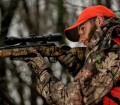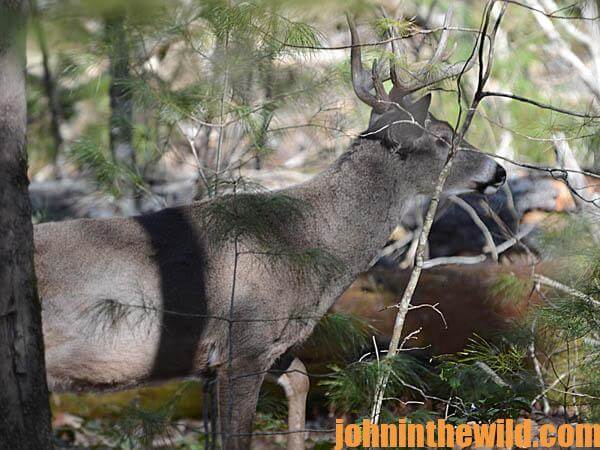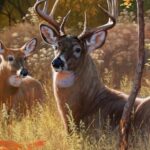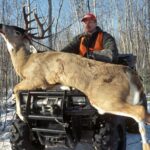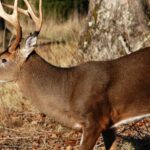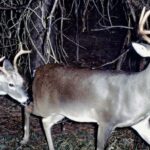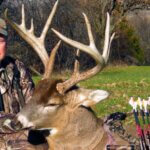John’s Note: Nationally-known deer seminar speaker and avid deer hunter, Ronnie Groom of Panama City, Florida, has faced this problem of how to get a buck within range often in the areas he hunts. He uses these tactics, which work well for bowhunters or gun hunters, to funnel deer into their stand sites.
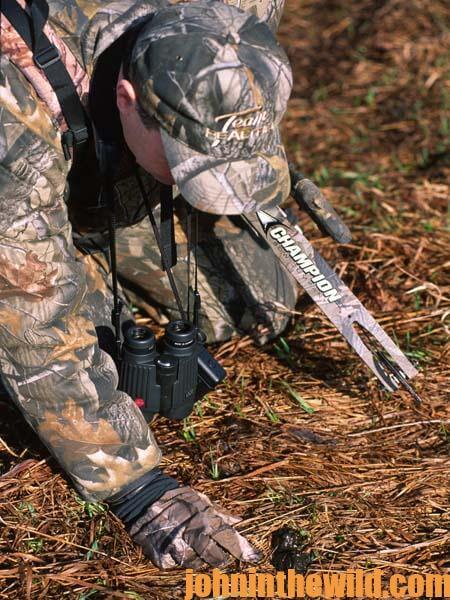 Most archers know that when the habitat is restricted, deer will funnel through a small neck to move from one area to another. For example, if there are two fields on either side of a wood lot, often where those fields corner will be a small neck of woods that looks like the end of a funnel. Here is where the deer that want to travel from one woodlot to another woodlot naturally will pass through, rather than having to walk through the field. And, these are ideal places for the bowhunter to set-up. However, one of the common problems is that these funnels may be 75- to 100-yards wide. If the deer walks on one side of the funnel while the hunter is set-up on the other side, the bowhunter may not get a shot. The neck of the funnel must be narrowed down to put the deer within bow range.
Most archers know that when the habitat is restricted, deer will funnel through a small neck to move from one area to another. For example, if there are two fields on either side of a wood lot, often where those fields corner will be a small neck of woods that looks like the end of a funnel. Here is where the deer that want to travel from one woodlot to another woodlot naturally will pass through, rather than having to walk through the field. And, these are ideal places for the bowhunter to set-up. However, one of the common problems is that these funnels may be 75- to 100-yards wide. If the deer walks on one side of the funnel while the hunter is set-up on the other side, the bowhunter may not get a shot. The neck of the funnel must be narrowed down to put the deer within bow range.
“Many times there are natural obstacles in the funnel to help you,” Groom mentions. “Often there will be an edge where maybe a creek bottom divides the funnel, and the deer naturally will walk to the edge of the creek. Or, there may be a briar thicket or some type of thick cover that will serve as an edge. So, I search for edges within funnels, which will concentrate deer into a smaller area. I also look for downed trees. Although deer can hop over a fallen tree, usually deer will walk around the tree. Therefore if I can find a fallen tree in a funnel area, I set-up close to the tree – assuming that the deer will walk around the tree rather than going over it. If there’s no edge, no downed-tree or any way to funnel the deer, then I build a brush walk across one side of the funnel. The deer will begin to walk around that brush obstruction and funnel under the tree where I am.”
 Many funnel areas may be regions with plenty of thick brush – not just relatively-open funnel regions found in hardwoods. These types of places may be better locations to see deer. “When I locate a neck of woods with very-heavy cover that I feel the deer are funneling through, I go in prior to the season and cut a trail through that thick cover for the deer,” Groom comments. “Then the deer have a clean, easier trail to walk through the cover. Often they will begin to utilize that trail and be right where I want them to be when the season starts.”
Many funnel areas may be regions with plenty of thick brush – not just relatively-open funnel regions found in hardwoods. These types of places may be better locations to see deer. “When I locate a neck of woods with very-heavy cover that I feel the deer are funneling through, I go in prior to the season and cut a trail through that thick cover for the deer,” Groom comments. “Then the deer have a clean, easier trail to walk through the cover. Often they will begin to utilize that trail and be right where I want them to be when the season starts.”
Groom was hunting in Georgia one season when he encountered a bottleneck that was too wide to hunt. “The night before I planned to hunt this region, we had a tremendous rain. The bottleneck had some low gullies and ditches in it. Right after the rain, these low places in the funnel filled with water. The standing water narrowed the neck from 100 yards down to 20 yards. The deer could have walked through the water, which was only about 6 – 8 inches deep, but instead they moved around the water to within 20 yards of my stand. By learning to close down natural funnels, you can put more deer at closer range more often.”
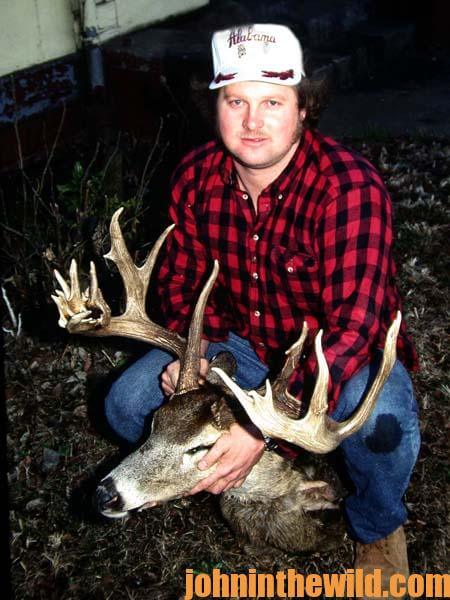 To get John E. Phillips’ Kindle eBooks and print books on hunting deer, “How to Hunt and Take Big Buck Deer on Small Properties,” “How to Hunt Deer Up Close: With Bows, Rifles, Muzzleloaders and Crossbows,” “PhD Whitetails: How to Hunt and Take the Smartest Deer on Any Property,” “How to Take Monster Bucks,” “How to Hunt Deer Like a Pro,” and “Bowhunting Deer: Mossy Oak Pros Know Bucks and Bows,” or to prepare venison, “Deer & Fixings,” click here.
To get John E. Phillips’ Kindle eBooks and print books on hunting deer, “How to Hunt and Take Big Buck Deer on Small Properties,” “How to Hunt Deer Up Close: With Bows, Rifles, Muzzleloaders and Crossbows,” “PhD Whitetails: How to Hunt and Take the Smartest Deer on Any Property,” “How to Take Monster Bucks,” “How to Hunt Deer Like a Pro,” and “Bowhunting Deer: Mossy Oak Pros Know Bucks and Bows,” or to prepare venison, “Deer & Fixings,” click here.
For information on making jerky from your deer to provide a protein-rich snack, you can download a free book from https://johninthewild.com/free-books.


